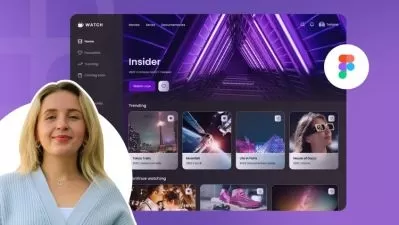The User Experience of Motion (for Non-Designers)
Tom Green
1:52:25
Description
Learn the language of motion, and how it can enhance and transform digital user experiences with visceral, meaningful visual responses and actions with expert Tom Green. Tom shows you how principles like speed, velocity, and acceleration are applied to UX design using Figma and After Effects—but this course isn’t focused on using these applications. Rather, it’s aimed at increasing your awareness of how things move and how that movement is presented in UX design. Learn about the characteristics of motion and our responses to it, how time and motion interact, and how to define motion paths and velocity curves to precisely move objects in the digital realm. Plus, discover ways to create dimensionality and the feeling of depth and 3D space in 2D views, and learn about obscuration and the parallax effect.
More details
User Reviews
Rating
Tom Green
Instructor's Courses
Linkedin Learning
View courses Linkedin Learning- language english
- Training sessions 32
- duration 1:52:25
- Release Date 2025/01/22











